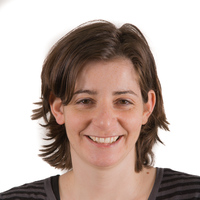
Viktor Fursov
ADDRESS for CONTACTS: Dr Victor FURSOV
Department of Taxonomy of Entomophagous Insects and Biocontrol, Institute of Zoology of National Academy of Sciences of Ukraine, Bogdan Khmelnitskiy Street, 15,
Kiev-54, 01054, UKRAINE
E-mail: ufensia@gmail.com
SKYPE: zemi_san
FACEBOOK: https://www.facebook.com/victor.fursov.39
YOUTUBE: http://www.youtube.com/user/ufensia/
and
https://www.youtube.com/channel/UCIjnonwWQ_JJ8I7P6gXdbDQ
and
http://www.youtube.com/watch?v=V8UKJtZ4Go8
Address: Kiev, Bogdan Khmel'nitskiy Street 15, 01601, Ukraine
Department of Taxonomy of Entomophagous Insects and Biocontrol, Institute of Zoology of National Academy of Sciences of Ukraine, Bogdan Khmelnitskiy Street, 15,
Kiev-54, 01054, UKRAINE
E-mail: ufensia@gmail.com
SKYPE: zemi_san
FACEBOOK: https://www.facebook.com/victor.fursov.39
YOUTUBE: http://www.youtube.com/user/ufensia/
and
https://www.youtube.com/channel/UCIjnonwWQ_JJ8I7P6gXdbDQ
and
http://www.youtube.com/watch?v=V8UKJtZ4Go8
Address: Kiev, Bogdan Khmel'nitskiy Street 15, 01601, Ukraine
less
Related Authors
Nina Fatouros
Wageningen University and Research Centre
Soren Bak
University of Copenhagen
Lucas Kaminski
Evolutionary Biology Institut Barcelona
InterestsView All (55)






Uploads
Papers by Viktor Fursov
Trichogramma (Hymenoptera: Trichogrammatidae), T. chagres sp.
nov. and T. soberania sp. nov., were found in a tropical lowland
rainforest in Panama, Central America. In this paper, we describe,
illustrate and discuss the biology and morphological and molecular
characterization of the two new Trichogramma wasp species. Both
species were collected from eggs of passion vine butterflies, Agraulis
vanillae vanillae (Lepidoptera: Nymphalidae: Heliconiinae) and unidentified
Heliconiini species, laid on different Passiflora species
(Malpighiales: Passifloraceae). A female T. soberania sp. nov. wasp
was observed on the wings of a female Heliconius hecale melicerta
butterfly caught in the wild. This suggests that this species may
occasionally be phoretic on adult female butterflies to find suitable
host eggs. Our study adds two more species identifications to the
scarce record of Trichogramma wasps from the widespread
Heliconiini butterflies in Central America.
KEYWORDS
Heliconius; hitch-hiking; ITS-2 region of ribosomal DNA; tropical lowland rainforest; Soberania National Park; Passiflora
Jozef B. Woelkea, b, Viktor N. Fursov, c, Alex V. Gumovsky, c, Marjolein de Rijka, d, Catalina Estradae, Patrick Verbaarschota, f, Martinus E. Huigensa, g, and Nina E. Fatourosa, f, Laboratory of Entomology, Wageningen University & Research, Wageningen, the Netherlands; b, Business Unit Greenhouse Horticulture, Wageningen University & Research, Bleiswijk, the Netherlands; c, Schmalhausen Institute of Zoology, National Academy of Sciences of Ukraine, Kiev, Ukraine; d, Education Support Centre,
Wageningen University & Research, Wageningen, the Netherlands; e, Department of Life Sciences, Imperial College London, Ascot, UK; f, Biosystematics group, Wageningen University & Research, Wageningen, the Netherlands; g, Education Institute, Wageningen University & Research, Wageningen, the Netherlands
research and analysis of literary sources, a list of primarily little-known species of alien insects that have been registered in Ukraine over the
past 20 years is given.
Key words. Coleoptera, Lepidoptera, Diptera, Mantodea, alien species, invasive species, Ukraine.
Бабицький, А. І., Геряк, Ю. М., Заморока, А. М., Кавурка, В. В., Корнєєв, В. О., Назаренко, В. Ю., Попов, Г. В., Прохоров, О. В.,
Пушкар, Т. І., Фурсов, В. М., Чернєй, Л. С. Матеріали до фауни інвазійних чужорідних комах (Insecta) України. — На основі
власних досліджень і аналізу літературних джерел наведено список у першу чергу маловідомих видів чужорідних комах, яких було
зареєстровано за останні 20 років в Україні.
Abstract—A morpho-biological review and analysis of the Palaearctic species of the robusta group of the genus
Eurytoma is presented. The diff erences between the species of the robusta group and the other species-groups of
the genus Eurytoma are described. The hosts of the species of the robusta group and their geographical distribution are
listed. A key to 62 Palaearctic species of the robusta group is compiled. A new species, Eurytoma uzbekistanica sp. n.
belonging to the robusta species-group and morphologically closest to Eu. nochurae Zerova is described from Uzbekistan.
Photographs of the types of Eu. uzbekistanica sp. n., Eu. herbaria Zerova, Eu. ibaraca Zerova, Eu. paramygdali
Zerova et Fursov, Eu. armenica Zerova et Fursov, and Eu. nagoya Zerova, and also of the non-type specimens of
Eu. dentata Mayr, Eu. robusta Mayr, and Eu. pyrrhidii Erdös are given. The holotype of the new species and material
of the other species discussed are deposited in the collection of I.I. Schmalhausen Institute of Zoology of the National
Academy of Sciences of Ukraine (Kyiv).
Key words: Chalcidoidea, egg parasitoids, behavior, immature morphology, Coleoptera, Chrysomelidae, Asteraceae.
in the scientifi c collections of the Institute of Zoology (Kyiv, Ukraine) by the end of 2022.
About 34,000 animal species belonging to 8,424 genera, 96 orders, 20 classes and 8 phyla are
represented in 627 systematic collections (Chapter I). About 22,000 specimens are represented
by type specimens (holotypes, paratypes, lectotypes) of about 4,200 animal species. Holotypes
of 1,379 species are kept in the collections of the Institute of Zoology. About 16,000 animal
species deposited in the scientifi c collections of the Institute of Zoology are only partially identifi
ed to diff erent taxonomic levels due to their archival storage. Th e complete list of systematic
collections of the Institute of Zoology is given together with the names of their scientifi c
curators (Chapter 1). Th e list of samples and taxonomic characteristics of inclusions from the
Rivne amber collections is presented (Chapter II). Th e list of comparative faunistic collections
(chapter III), and the list of histological and morphoanatomical collections (chapter IV) give
general data on various zoological subjects under current scientifi c research.
Key words: fundamental collections, Institute of Zoology, National Academy of Sciences of
Ukraine.
with Tetramesa Walker 1848. An illustrated redescription of Philachyra maderae
(Walker, 1852) comb. n. is provided based on the collection material from Ukraine, Russian
Federation, Azerbaijan, Tajikistan, and Turkey. Collection is deposited at the I.I. Schmalhausen
Institute of Zoology of National Academy of Sciences in Kyiv, Ukraine. Its nomenclature
is discussed and Philachyra maderae (Walker, 1849) comb. n. is proposed as a valid
name, with the synonymy listed. Philachyra diff ers from the Tetramesa by the presence
of very shiny surface of the body without expressed sculpture; the presence of long setation
over the whole body, and the development of two generations, wingless (spring), and
winged (summer) and many additional characters.
Key words: Hymenoptera, Eurytomidae, Chalcidoidea, Philachyra, Tetramesa, chalcid wasps,
distribution.
KEY WORDS: Biocontrol, methods, equipment, traps, collecting, rearing, entomophagous, parasitoids, Hymenoptera, agriculture
Thirty-five females of Megabruchidius dorsalis(Farhaeus) emerged 28–30.11.2014 from dry pods of Gleditsia triacanthos (with 12 to 23 seeds in each pod) collected 27.11.2014 in Darnytsia, Kyiv, Ukraine (50°26'56'' N, 30°36'52.7'' E). Entomological material is deposited in the collection of I. I. Schmalhausen Institute of Zoology, NAS of Ukraine, Kyiv. Th is is a new record of M. dorsalis in Ukraine and the northernmost locality of its distribution. M. dorsalis has been already recorded from Donetsk Region (Martynov, V. V., Nikulina, T. V. The first finding of invasive species Megabruchidius dorsalis in the fauna of Ukraine // Vestnik zoologii. — 2014. — 48, N 3. — P. 286). Original distribution of M. dorsalisincluded Japan, Taiwan, China, India. Th e host plants of M. dorsalisare: Gleditsia japonica Lodd., G. triacanthos L.,G. sinensisLam., G. rolfeiVidal. The species was previously recorded in Europe from France, Hungary, Italy and Switzerland (Ramos, Y. R. Revision del genero orowiec Megabruchidius Borowiec, 1984 (Coleoptera: Bruchidae) y nuevas citas para la fauna Europea // Boletin Sociedad Entomologica Aragonesa. — 2009. — 45. — P. 371–382).
Fursov V.N. About the nature of Japan. Part-2. – Journal «Kraina Znaniy (Country of Knowledge)» (Кiev, Ukraine), 2015, № 7, p.21-24. (in Russian language)
Фурсов В.Н. Нежное очарование природы Японии. – Журнал «Країна знань» (Киев), 2015, № 5, с.27-29, c.33.
CHALCIDOIDEA, EURYTOMIDAE) FROM THE SEEDS OF HONEY
LOCUST GLEDITSIA TRIACANTHOS (CAESALPINIACEAE) IN
UKRAINE. - Vestnik zoologii, 2015,49 (4), pp. 369–372.
Japan (Honshu). Holotypes of the new species are deposited in the Zoological Institute of the Russian Academy of Sciences (St Petersburg, Russia). Ch. laesus (Wiedemann, 1817) is recorded from Japan for the first time.
Описаны новые для науки виды рода Chrysotus Meigen, 1824, а именно Ch. kumazawai sp. n. из Японии (Хонсю) и России (Сахалин) и Ch. tagoi sp. n. из Японии
(Хонсю). Голотипы новых видов хранятся в Зоологическом институте РАН (Санкт-Петербург, Россия). Впервые для фауны Японии указывается Ch. laesus (Wiedemann,
1817).
Congress Apimondia took place in the
Ukrainian capital, the city of Kiev on
September 29th – October 04th 2013, in
which we were participants and presented
our work. On November 04th – 9th 2014
we also participated in the 10th Apislavia
Congress which was arranged concurrently
with the 4th International Mugla Beekeeping
& Pine Honey Congress in Oludeniz,
Mugla Province, in Turkey.
Micro-Insects Under Microscope?
Энтомолог, кандидат биологических наук Виктор Фурсов рассказывает о методах съемки микрофотографий, секреты новых технологий и использования современного цифрового фото- и видео- оборудования для записи научного видео- и фото-материала при съемке фото и видео насекомых и других мелких членистоногих под стерео-микроскопом и оптическим микроскопом.
ОБОРУДОВАНИЕ Б: Бинокулярный микроскоп МБС-10, оптический микроскоп ОЛИМПУС СХ40, Видео-Камера SONY DCR-240E, фотоаппарат Canon-РС1677, фотоаппарат OLYMPUS CX4040 с приложением на оптическом микроскопе ОЛИМПУС СХ40, и цифровая программы обработки данных DP-Soft для записи цифровых фотографий на компьютере.
Trichogramma (Hymenoptera: Trichogrammatidae), T. chagres sp.
nov. and T. soberania sp. nov., were found in a tropical lowland
rainforest in Panama, Central America. In this paper, we describe,
illustrate and discuss the biology and morphological and molecular
characterization of the two new Trichogramma wasp species. Both
species were collected from eggs of passion vine butterflies, Agraulis
vanillae vanillae (Lepidoptera: Nymphalidae: Heliconiinae) and unidentified
Heliconiini species, laid on different Passiflora species
(Malpighiales: Passifloraceae). A female T. soberania sp. nov. wasp
was observed on the wings of a female Heliconius hecale melicerta
butterfly caught in the wild. This suggests that this species may
occasionally be phoretic on adult female butterflies to find suitable
host eggs. Our study adds two more species identifications to the
scarce record of Trichogramma wasps from the widespread
Heliconiini butterflies in Central America.
KEYWORDS
Heliconius; hitch-hiking; ITS-2 region of ribosomal DNA; tropical lowland rainforest; Soberania National Park; Passiflora
Jozef B. Woelkea, b, Viktor N. Fursov, c, Alex V. Gumovsky, c, Marjolein de Rijka, d, Catalina Estradae, Patrick Verbaarschota, f, Martinus E. Huigensa, g, and Nina E. Fatourosa, f, Laboratory of Entomology, Wageningen University & Research, Wageningen, the Netherlands; b, Business Unit Greenhouse Horticulture, Wageningen University & Research, Bleiswijk, the Netherlands; c, Schmalhausen Institute of Zoology, National Academy of Sciences of Ukraine, Kiev, Ukraine; d, Education Support Centre,
Wageningen University & Research, Wageningen, the Netherlands; e, Department of Life Sciences, Imperial College London, Ascot, UK; f, Biosystematics group, Wageningen University & Research, Wageningen, the Netherlands; g, Education Institute, Wageningen University & Research, Wageningen, the Netherlands
research and analysis of literary sources, a list of primarily little-known species of alien insects that have been registered in Ukraine over the
past 20 years is given.
Key words. Coleoptera, Lepidoptera, Diptera, Mantodea, alien species, invasive species, Ukraine.
Бабицький, А. І., Геряк, Ю. М., Заморока, А. М., Кавурка, В. В., Корнєєв, В. О., Назаренко, В. Ю., Попов, Г. В., Прохоров, О. В.,
Пушкар, Т. І., Фурсов, В. М., Чернєй, Л. С. Матеріали до фауни інвазійних чужорідних комах (Insecta) України. — На основі
власних досліджень і аналізу літературних джерел наведено список у першу чергу маловідомих видів чужорідних комах, яких було
зареєстровано за останні 20 років в Україні.
Abstract—A morpho-biological review and analysis of the Palaearctic species of the robusta group of the genus
Eurytoma is presented. The diff erences between the species of the robusta group and the other species-groups of
the genus Eurytoma are described. The hosts of the species of the robusta group and their geographical distribution are
listed. A key to 62 Palaearctic species of the robusta group is compiled. A new species, Eurytoma uzbekistanica sp. n.
belonging to the robusta species-group and morphologically closest to Eu. nochurae Zerova is described from Uzbekistan.
Photographs of the types of Eu. uzbekistanica sp. n., Eu. herbaria Zerova, Eu. ibaraca Zerova, Eu. paramygdali
Zerova et Fursov, Eu. armenica Zerova et Fursov, and Eu. nagoya Zerova, and also of the non-type specimens of
Eu. dentata Mayr, Eu. robusta Mayr, and Eu. pyrrhidii Erdös are given. The holotype of the new species and material
of the other species discussed are deposited in the collection of I.I. Schmalhausen Institute of Zoology of the National
Academy of Sciences of Ukraine (Kyiv).
Key words: Chalcidoidea, egg parasitoids, behavior, immature morphology, Coleoptera, Chrysomelidae, Asteraceae.
in the scientifi c collections of the Institute of Zoology (Kyiv, Ukraine) by the end of 2022.
About 34,000 animal species belonging to 8,424 genera, 96 orders, 20 classes and 8 phyla are
represented in 627 systematic collections (Chapter I). About 22,000 specimens are represented
by type specimens (holotypes, paratypes, lectotypes) of about 4,200 animal species. Holotypes
of 1,379 species are kept in the collections of the Institute of Zoology. About 16,000 animal
species deposited in the scientifi c collections of the Institute of Zoology are only partially identifi
ed to diff erent taxonomic levels due to their archival storage. Th e complete list of systematic
collections of the Institute of Zoology is given together with the names of their scientifi c
curators (Chapter 1). Th e list of samples and taxonomic characteristics of inclusions from the
Rivne amber collections is presented (Chapter II). Th e list of comparative faunistic collections
(chapter III), and the list of histological and morphoanatomical collections (chapter IV) give
general data on various zoological subjects under current scientifi c research.
Key words: fundamental collections, Institute of Zoology, National Academy of Sciences of
Ukraine.
with Tetramesa Walker 1848. An illustrated redescription of Philachyra maderae
(Walker, 1852) comb. n. is provided based on the collection material from Ukraine, Russian
Federation, Azerbaijan, Tajikistan, and Turkey. Collection is deposited at the I.I. Schmalhausen
Institute of Zoology of National Academy of Sciences in Kyiv, Ukraine. Its nomenclature
is discussed and Philachyra maderae (Walker, 1849) comb. n. is proposed as a valid
name, with the synonymy listed. Philachyra diff ers from the Tetramesa by the presence
of very shiny surface of the body without expressed sculpture; the presence of long setation
over the whole body, and the development of two generations, wingless (spring), and
winged (summer) and many additional characters.
Key words: Hymenoptera, Eurytomidae, Chalcidoidea, Philachyra, Tetramesa, chalcid wasps,
distribution.
KEY WORDS: Biocontrol, methods, equipment, traps, collecting, rearing, entomophagous, parasitoids, Hymenoptera, agriculture
Thirty-five females of Megabruchidius dorsalis(Farhaeus) emerged 28–30.11.2014 from dry pods of Gleditsia triacanthos (with 12 to 23 seeds in each pod) collected 27.11.2014 in Darnytsia, Kyiv, Ukraine (50°26'56'' N, 30°36'52.7'' E). Entomological material is deposited in the collection of I. I. Schmalhausen Institute of Zoology, NAS of Ukraine, Kyiv. Th is is a new record of M. dorsalis in Ukraine and the northernmost locality of its distribution. M. dorsalis has been already recorded from Donetsk Region (Martynov, V. V., Nikulina, T. V. The first finding of invasive species Megabruchidius dorsalis in the fauna of Ukraine // Vestnik zoologii. — 2014. — 48, N 3. — P. 286). Original distribution of M. dorsalisincluded Japan, Taiwan, China, India. Th e host plants of M. dorsalisare: Gleditsia japonica Lodd., G. triacanthos L.,G. sinensisLam., G. rolfeiVidal. The species was previously recorded in Europe from France, Hungary, Italy and Switzerland (Ramos, Y. R. Revision del genero orowiec Megabruchidius Borowiec, 1984 (Coleoptera: Bruchidae) y nuevas citas para la fauna Europea // Boletin Sociedad Entomologica Aragonesa. — 2009. — 45. — P. 371–382).
Fursov V.N. About the nature of Japan. Part-2. – Journal «Kraina Znaniy (Country of Knowledge)» (Кiev, Ukraine), 2015, № 7, p.21-24. (in Russian language)
Фурсов В.Н. Нежное очарование природы Японии. – Журнал «Країна знань» (Киев), 2015, № 5, с.27-29, c.33.
CHALCIDOIDEA, EURYTOMIDAE) FROM THE SEEDS OF HONEY
LOCUST GLEDITSIA TRIACANTHOS (CAESALPINIACEAE) IN
UKRAINE. - Vestnik zoologii, 2015,49 (4), pp. 369–372.
Japan (Honshu). Holotypes of the new species are deposited in the Zoological Institute of the Russian Academy of Sciences (St Petersburg, Russia). Ch. laesus (Wiedemann, 1817) is recorded from Japan for the first time.
Описаны новые для науки виды рода Chrysotus Meigen, 1824, а именно Ch. kumazawai sp. n. из Японии (Хонсю) и России (Сахалин) и Ch. tagoi sp. n. из Японии
(Хонсю). Голотипы новых видов хранятся в Зоологическом институте РАН (Санкт-Петербург, Россия). Впервые для фауны Японии указывается Ch. laesus (Wiedemann,
1817).
Congress Apimondia took place in the
Ukrainian capital, the city of Kiev on
September 29th – October 04th 2013, in
which we were participants and presented
our work. On November 04th – 9th 2014
we also participated in the 10th Apislavia
Congress which was arranged concurrently
with the 4th International Mugla Beekeeping
& Pine Honey Congress in Oludeniz,
Mugla Province, in Turkey.
Micro-Insects Under Microscope?
Энтомолог, кандидат биологических наук Виктор Фурсов рассказывает о методах съемки микрофотографий, секреты новых технологий и использования современного цифрового фото- и видео- оборудования для записи научного видео- и фото-материала при съемке фото и видео насекомых и других мелких членистоногих под стерео-микроскопом и оптическим микроскопом.
ОБОРУДОВАНИЕ Б: Бинокулярный микроскоп МБС-10, оптический микроскоп ОЛИМПУС СХ40, Видео-Камера SONY DCR-240E, фотоаппарат Canon-РС1677, фотоаппарат OLYMPUS CX4040 с приложением на оптическом микроскопе ОЛИМПУС СХ40, и цифровая программы обработки данных DP-Soft для записи цифровых фотографий на компьютере.